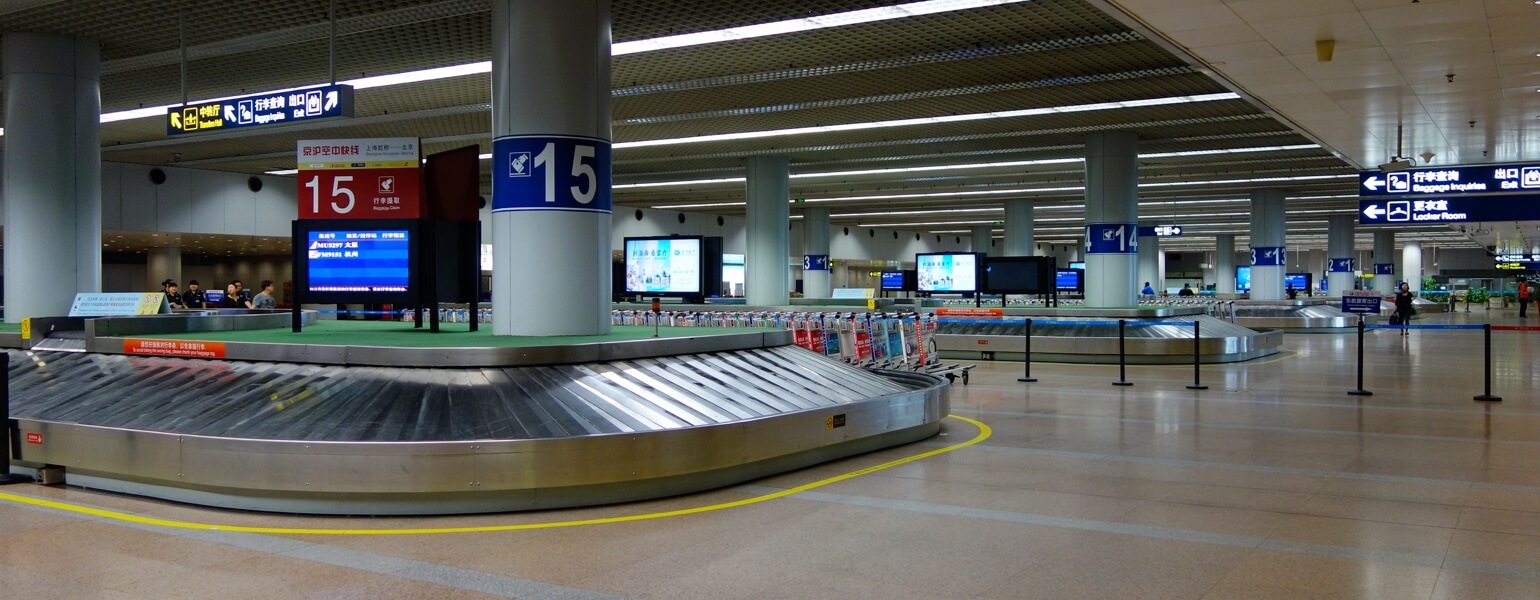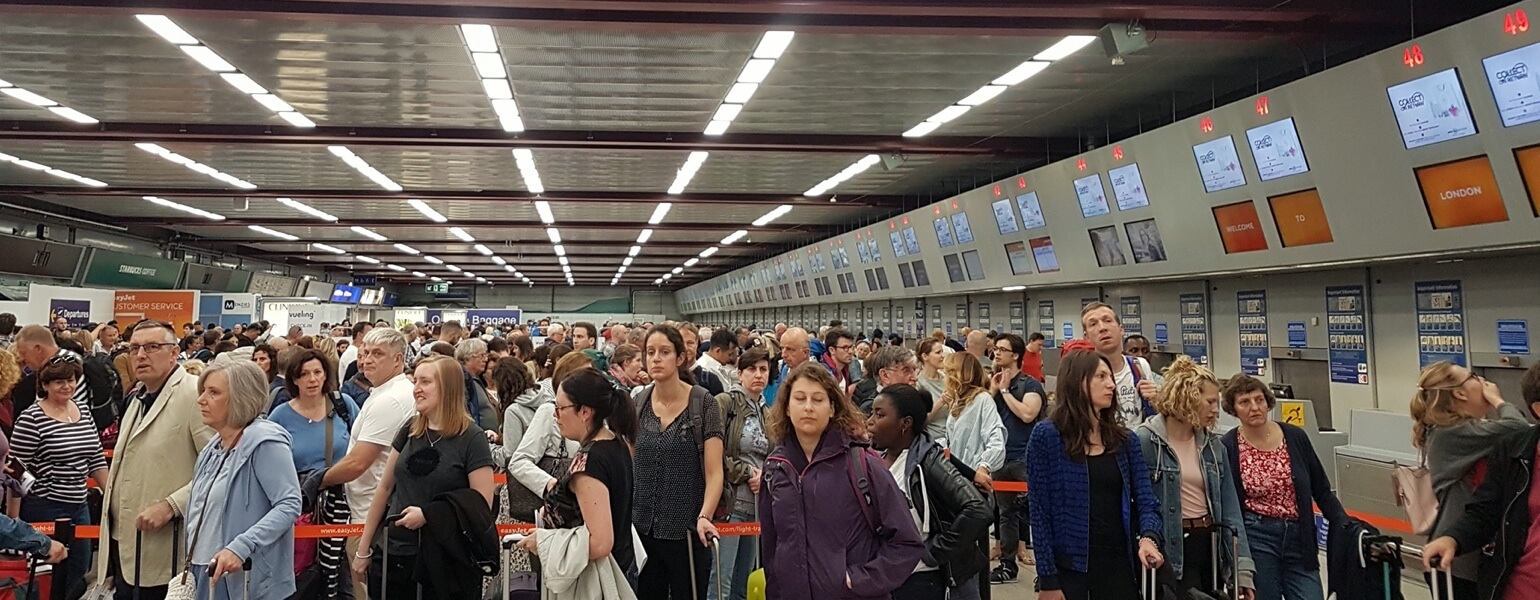The travel experience remains far from perfect — especially at the airport, where congestion, delays, operational inefficiencies, and a general feeling of stress and chaos can arise at any time. Can airport automation improve that?
Airports cannot physically expand to address all these issues. Instead, the need for efficiency and convenience for ever-growing passenger volumes must be supplied via technology.
Keeping passenger experience at an acceptable level under these changing circumstances is a major challenge. It requires continuously improving flow efficiency by means of effective entrance control, where aviation digitalization and daily processes automation are the ultimate solutions.
Stressful airports

Ideally, the waiting time spent at the airport should be a relaxing and positive experience. But, the airport is a stressful environment for many travelers. Typically, the major causes of passenger stress are:
- Lack of control. Where to go next? How do all these different processes work?
- Busy environment. The airport is an unusual environment with overwhelming crowds of people moving at a high pace, often invading personal space.
- Time deadlines. Delays could be disastrous, and each process has an associated wait line and a possible deadline impact. 37% of passengers report anxiety about being late or missing a flight.
- ‘Accumulation’ effects. If travelers are in a state of high stress already, hassles at the airport are likely to compound it.
- Unpredictability. Last-minute changes and unpredictable procedures.
To provide smooth passage through all touchpoints with reasonable wait times is a logistical challenge for airport operations. Passenger flows vary during the day — with peaks that may put passage efficiency to the test, that is why security must be kept at a constant high standard. By automating such touchpoints, processing will be more efficient. Also, automation allows passengers to be given specific information which further improves the process efficiency.
What is automated in airports now

The most effective way to improve flow efficiency, reduce waiting time and passenger stress lies in passenger process automation. By this, the risk of packed passageways and unexpected delays would be significantly reduced for the benefit of all involved — passengers, the airport, and airline operators.
For example, airports in London, Tokyo, and Singapore, among others, are pushing for autonomous equipment: self-driving vehicles, automated baggage handling, and transport systems and even aerobridges that align themselves to plane doors.
Tokyo Airport deploys friendly-looking robots to help with airport security, transportation, logistics, and translations.
Taiwan’s Songshan and Taoyuan international airports have robots that tell passengers their departure details and weather updates for their destinations by simply scanning boarding passes. They also take the opportunity to upsell the latest duty-free special offers and airline promotions.
South Korea’s Incheon Airport also deploys robots to provide information and directions to departure gates. They move autonomously and navigate with cameras, ultrasonic, laser and proximity sensors, recognize voice and can process language and display information on LCD screens.
Changi Airport’s Terminal 4 is testing a remote-controlled vehicle that can transport baggage from a plane to the baggage handling area in 10 minutes. It also uses bots to deliver food to lounges. Its kitchens have assembly lines that work with just 9 employees instead of 45. It uses an automated cutlery packing system to improve productivity.
The airport is also testing a system for air traffic controllers to monitor aircraft using digital infrared cameras to improve visibility during hazy or low-visibility conditions.
Sydney Airport T1 International lets passengers do the baggage check-in by themselves. One million bags were successfully checked-in within the year and it was an immense achievement considering the solution had been rolled out to the international terminal only. Similarly, ICM’s ‘Auto Bag Drop’ units are being rolled out at some of the most innovative airports in the world, including Singapore’s Changi Airport.
These innovations not only allow passengers to quickly and easily drop off their bags at their convenience but also help airports deal with congestion before it arises, transforming the design of airports to improve passenger flow.
With the flexibility to scale up and down at their convenience and the ease of automation, airports can effectively redesign passenger handling. By implementing a solid automation foundation, airports will be well-placed to incorporate biometric technology, an important realization of the fully-automated airport.
With these automated solutions in place, the most innovative airports can look beyond self-service, creating a seamless path through the airport to transform the experience of their passengers.
One ID concept

International Air Transport Association is promoting a One ID concept to replace the present repetitive process of showing boarding passes and passports to different parties for different purposes. Each of these stakeholders – airlines, border control, customs, and screening authorities — developed their processes independently of each other.
With the use of One ID, trusted digital identity, biometric recognition, and a shared collaborative identity management platform will simplify the security processes. This can reduce lines and wait times, and prevent the use of false identification papers, in cases of human trafficking and evading the law.
Also, IATA is going to start using radio frequency identification (RFID) in baggage tags from 2020. With these chips, baggage can be tracked at almost any point in all airport processes, minimizing the risk of lost bags, theft, and fraud — a big step to airport automation.
Passengers preferences

OAG, a big global data provider, has surveyed more than 2,000 travelers through its flight app just to identify passengers’ needs and how airports, airlines, and technology providers can delight their customers.
Every traveler, without a doubt, wants to get to their destination as fast as possible — and airports, airlines, and tech providers are investing heavily in automation to make that happen. But despite the investments, there’s still a lot of waiting around: 50% of travelers report spending at least 45 minutes waiting in line while at the airport, with 21% saying they spend at least an hour in line, on average. While a completely queue-less airport experience may be a pipedream, shorter lines and less congestion benefits everyone.
Many airports and airlines are trying to turn to automation. But according to the survey, automation is not a cure-all, at least not yet.
By most metrics, travelers prefer human customer service to automation for most travel functions, including baggage (54% human customer service preference to 46% automation preference), security (55% to 45%), boarding (64% to 36%), concierge (83% to 17%) and in-flight services (80% to 20%).
The only area where most travelers prefer automation to human customer service is ticketing and check-in — both of which are already commonplace today.
Airport automation benefits

AI and automation might seem like a savior for the travel industry, but it’s certainly true that the future of air travel is not all ones and zeroes.
Still, when looking into the entire passenger process, including all touchpoints, the potential for saving wait time is significant. The passenger benefit is huge: as wait times are decreased, passenger frustration will also decrease, and the time saved can instead be spent shopping, working, or relaxing — altogether improving the positive passenger experience.
But for other airport processes, there is simply no replacement for another human who is there to lead and help us in our journey. At least for now.
Furthermore, CV and AI technologies are very expensive, especially if they are smart. The smarter — the costlier. Not to mention the time to develop such systems.
We are always eager to share our best practices and wide open to learn something new, so if you have any questions or ideas — feel free to write to us. Let’s reshape the world together!









